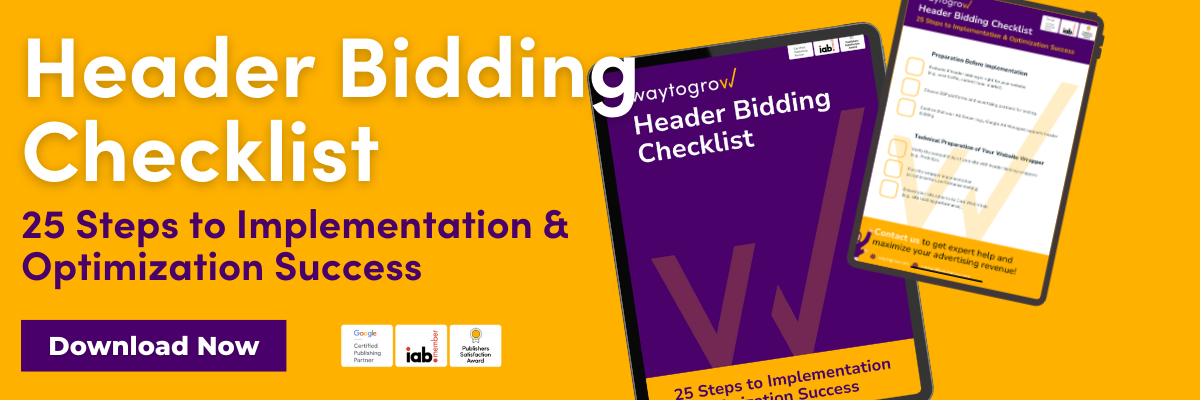In the digital publishing realm, one essential revenue artery stems from advertising. Advertisers willingly invest their efforts to manifest their ads on your platform, and your reward? A handsome revenue. This remuneration arrives through a model known as Cost Per Mille (CPM), a standard approach with Google Ad Exchange and Waytogrow.
Distinct from the Cost-Per-Click (CPC) model primarily employed in Adsense, CPM’s spotlight is on impressions rather than clicks. In essence, for every thousand impressions or ad displays, you earn a fee. With this fundamental shift away from CPC, impressions turn into the bedrock of success. The more impressions you muster, the higher the revenue publishers stand to earn, rendering user clicks on ads unnecessary.
In this ever-evolving digital universe, where traffic is synonymous with impressions, grasping how traffic affects ad revenue is indispensable. Hence, let’s deep-dive into this riveting subject and unveil the impact of traffic on ad revenue.
Traffic: It’s about the footfall on your digital doorstep – the number of visitors that grace your website or app. Measured in unique visitors or page views, the rule of thumb is quite simple. More traffic ushers in more ad displays, subsequently amplifying your potential earnings.
Boosting Traffic & Ad Revenue: A Walkthrough of Winning Strategies
Several pathways can escalate traffic, and as a pleasant ripple effect, enhance your ad revenue. Here are some cardinal strategies:
- Search Engine Optimization (SEO): SEO holds a significant stake in how traffic affects ad revenue. By tailoring your content and site structure for search engine results pages (SERPs), you can climb the ladder of rankings. This elevation beckons organic traffic from users probing for specific keywords or phrases.
- Social Media Marketing: Powerhouses like Facebook, Twitter, and Instagram are potent channels for content promotion. They help cast a wider net, driving traffic to your website, fostering brand recognition, and nurturing loyalty. Over time, these perks manifest as augmented traffic and ad revenue.
- Paid Advertising: Pay-per-click (PPC) advertising and display advertising serve as potent conduits to channel targeted traffic to your website. Although these methods might dent your wallet, a thoughtfully planned budget and target audience strategy can give a substantial fillip to your ad revenue.
Quality Trumps Quantity: How Traffic Influences Ad Revenue
It’s not solely about the tide of traffic. The quality of traffic is equally crucial in the discourse of how traffic affects ad revenue. Advertisers are inclined to bet on traffic that paves the way for conversions such as sales or sign-ups. Thus, prioritizing high-quality traffic from search engines, social media, and referral websites instead of low-quality traffic sources becomes paramount.
- Ad Placement & Formatting: Advertisers are ready to pay a premium for ads placed in prominent locations, such as the top of the page or nestled within the content. By experimenting with various ad formats like video ads or interactive ads, you can spark user engagement, drive clicks and conversions, and bolster ad revenue.
- Analytics & Optimization: Consistent tracking and analysis of your traffic and ad revenue are vital to unravel how traffic affects ad revenue. Tools like Google Analytics can offer valuable insights into traffic and revenue trends over time, aiding you in fine-tuning your strategies.
To wrap it up, understanding how traffic affects ad revenue is a crucial piece of the puzzle for online publishers. Enhancing traffic through SEO, social media marketing, and paid advertising, coupled with optimizing ad placement and formats, can significantly amplify ad revenue. By focusing on high-quality traffic and routinely analyzing your traffic and ad revenue, you’ll be poised to maximize your earning potential and fulfill your business goals. And don’t forget, at WayToGrow, we’re with you on this journey, offering a suite of tools and services tailored for publishers like you.
Share on:










